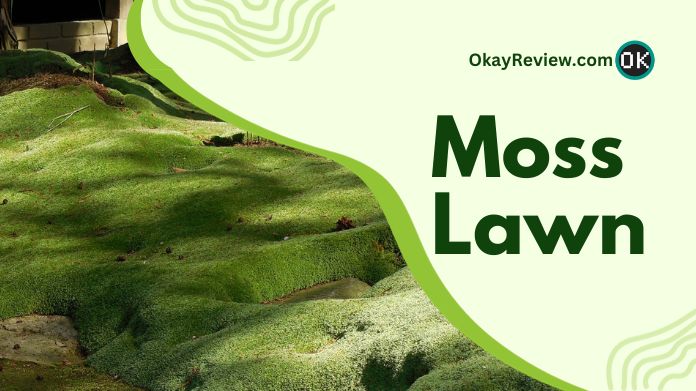Moss lawns are emerging as a popular alternative to traditional grass lawns. They offer underfoot a unique, soft, and cushiony feel, transforming gardens into serene landscapes.
In this guide, we’ll explore the wonders of Moss Lawn gardening, from the simplicity of its care to the benefits it brings.
Say goodbye to the hassle of mowing and constant maintenance, and say hello to the tranquil beauty of a mossy paradise.
Join us as we delve into Moss Lawns, where serenity meets sustainability, and the keyword is comfort.
Table of Contents
Why Choose a Moss Lawn?
A moss lawn is more than just a green carpet for your garden; it’s a statement of eco-friendliness and a nod to sustainable living. Unlike traditional grass, a moss lawn requires minimal maintenance, saving time and energy.
No more weekends you spent mowing or evenings watering! Moss lawns are nature’s low-maintenance ground cover. But the benefits continue beyond convenience.
Moss lawns are kind to the environment. They don’t need fertilizers or pesticides, making your garden a chemical-free zone. This helps the planet and ensures a safer space for kids and pets to play.
Moreover, moss lawns are versatile. Whether your garden is sun-drenched or shaded, moss is right for you.
And if you’re battling with poor soil quality, moss lawns come to the rescue again, thriving where grass struggles. Also, remember that lawns may require dethatching for optimal health and look.
In a world where sustainability is key, choosing a moss lawn is a step in the right direction. It’s not just a lawn; it’s a lifestyle choice that reflects environmental care and a desire for simplicity.
So, when considering a makeover for your garden, think moss lawn. It’s the green choice in every sense.
Selecting the Perfect Spot for Your Moss Lawn
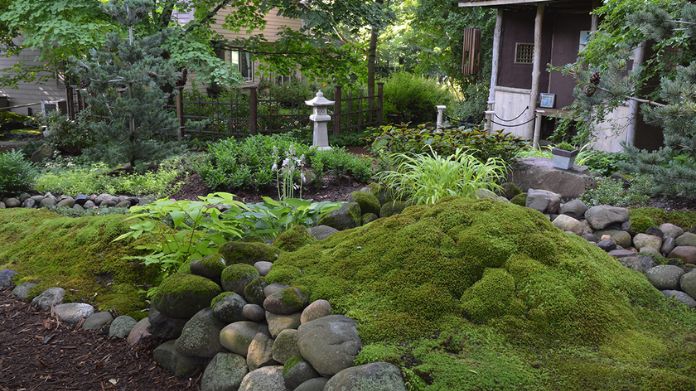 Choosing the right spot for your moss lawn is like finding the best home for a cherished plant. Moss isn’t picky, but it does have preferences.
Choosing the right spot for your moss lawn is like finding the best home for a cherished plant. Moss isn’t picky, but it does have preferences.
The ideal location ensures your moss lawn thrives, becoming the garden’s highlight.
1. Sunlight
While some moss types can handle a bit of sun, most prefer dappled light or areas shielded from the harsh midday rays.
If your garden has trees or tall plants casting shadows, that’s a great start. These shaded spots can be the perfect home for your moss lawn.
2. Moisture
If your garden has spots that retain moisture or areas where water tends to collect, these can be prime moss lawn real estate. However, avoid places with standing water, as moss prefers moist soil rather than puddles.
3. Ground Condition
Whether rocky, sandy, or clayey, moss can adapt. Just ensure the area is free from other weeds or grass, giving your moss lawn a clean slate to grow.
Preparing the Ground for Your Moss Lawn
1. Clear the Canvas
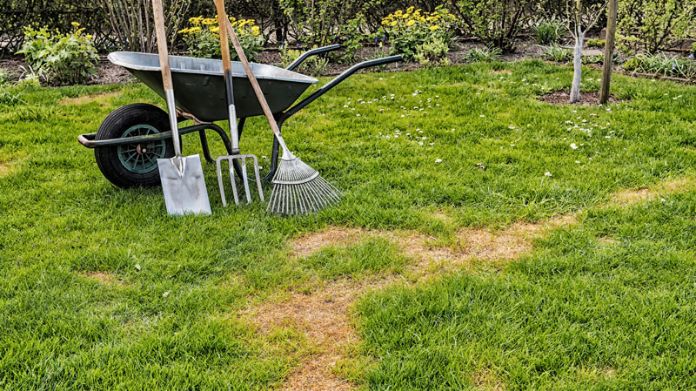 Thoroughly clean the allotted space to create the ideal circumstances for your Moss Lawn. This includes eliminating signs of grass, weeds, leaves, and other debris. The goal is to create a blank canvas for your moss to grow on.
Thoroughly clean the allotted space to create the ideal circumstances for your Moss Lawn. This includes eliminating signs of grass, weeds, leaves, and other debris. The goal is to create a blank canvas for your moss to grow on.
2. Level the Ground
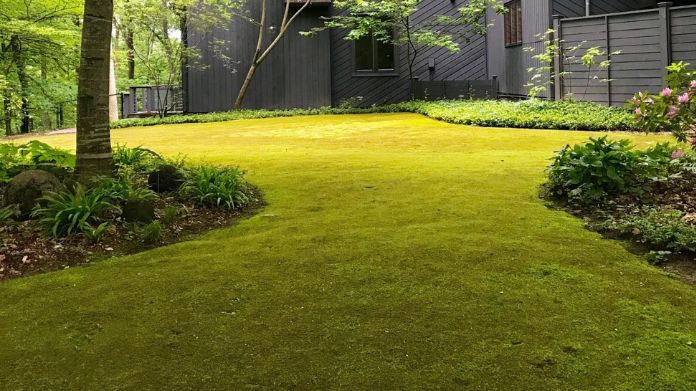 Furthermore, ensuring that the ground is flat, with no depressions or imperfections that may hold water, is critical. These low locations might be troublesome since excess water can stifle moss growth.
Furthermore, ensuring that the ground is flat, with no depressions or imperfections that may hold water, is critical. These low locations might be troublesome since excess water can stifle moss growth.
Moss grows when the ground is continually damp but not soggy since it is susceptible to moisture levels. Eliminating depressions is an essential step toward creating a thriving mossy landscape.
3. Hydration is Key
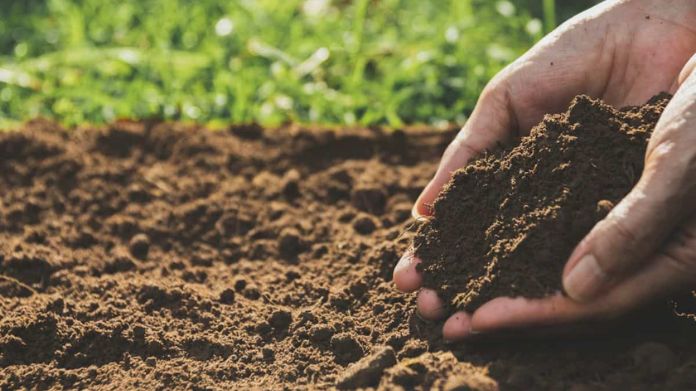 The ground must be thoroughly prepared to establish a perfect habitat for moss development. Maintaining a well-hydrated soil will help both the soil and the moss.
The ground must be thoroughly prepared to establish a perfect habitat for moss development. Maintaining a well-hydrated soil will help both the soil and the moss.
Before planting, properly water the soil and soak the moss to rehydrate it. Hydrated moss should seem green and vibrant, eager to grow.
4. Weed Out the Competition
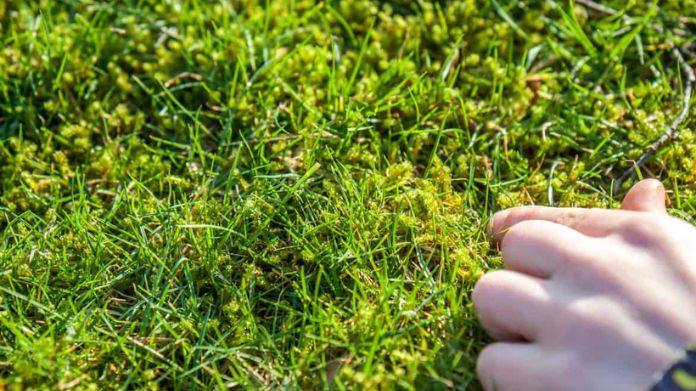 Remove any weeds and other debris competing with your moss once your soil has reached the proper pH.
Remove any weeds and other debris competing with your moss once your soil has reached the proper pH.
Moss grows best on a clean, plant-free surface, so keep your area free of grass, weeds, leaves, sticks, and other plants.
5. Depression Prevention
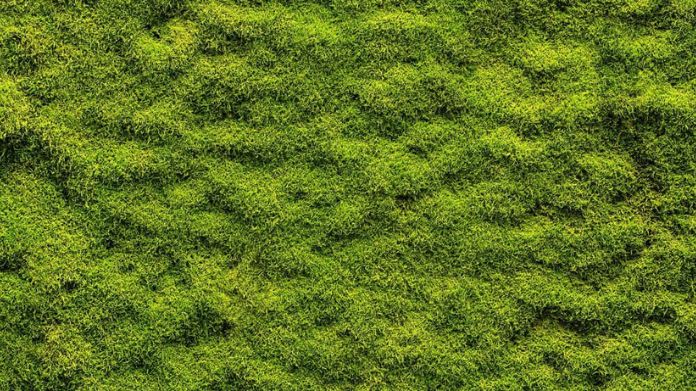 Address any soil depressions before planting. Water and debris can gather in depressions, suffocating your moss. A flat surface facilitates even moisture distribution, essential for a healthy moss lawn.
Address any soil depressions before planting. Water and debris can gather in depressions, suffocating your moss. A flat surface facilitates even moisture distribution, essential for a healthy moss lawn.
Choosing the Right Moss for Your Lawn
The fascinating world of Moss Lawns is divided into two major categories: acrocarps and pleurocarps.
These classifications are critical in determining which moss varieties thrive best in your climate and environment.
1. Acrocarps for Drier Climates
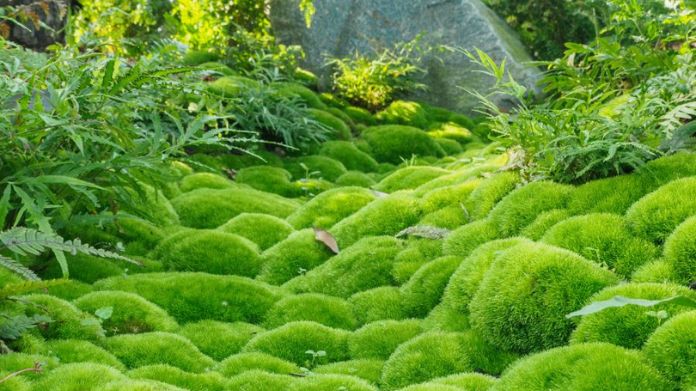 Acrocarp mosses shine when growing strong Moss Lawn in dry areas. These mosses are ideal for dry settings since they have adapted to grow even when moisture is scarce.
Acrocarp mosses shine when growing strong Moss Lawn in dry areas. These mosses are ideal for dry settings since they have adapted to grow even when moisture is scarce.
Broom moss and heath moss are two notable species that thrive under such settings. Broom moss is noted for its extraordinary tenacity, surviving even during seasons of minimal rainfall.
2. Pleurocarps for Cooler, Wetter Climates
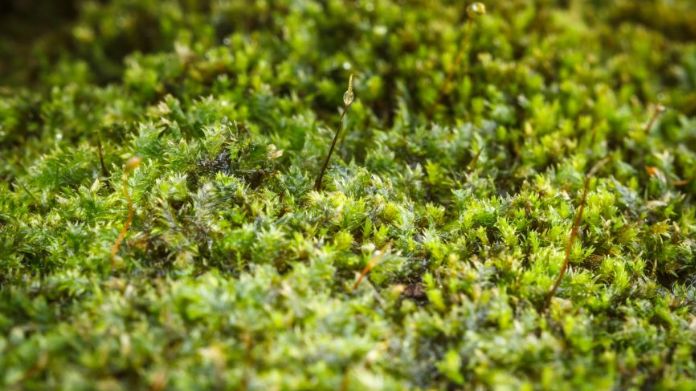 Pleurocarp mosses, on the other hand, are the best choice for developing a Moss Lawn in more relaxed and wetter areas. These sorts of mosses flourish in areas with more readily available moisture.
Pleurocarp mosses, on the other hand, are the best choice for developing a Moss Lawn in more relaxed and wetter areas. These sorts of mosses flourish in areas with more readily available moisture.
Fern and hypnum moss are two notable pleurocarp mosses for your Moss Lawn. Fern moss is a popular choice for these surroundings because of its delicate and feathery look, and it may provide a pleasant touch to usually damp and shadowed locations.
Another pleurocarp kind that thrives in these colder, moister circumstances is hypnum moss, recognized for its carpet-like growth pattern.
Planting and Nurturing Your Moss Lawn
The ideal time to plant moss is during cooler seasons like spring or fall. Start compacting the soil, then place torn moss pieces a few inches apart.
Secure them using sticks or netting. Water the moss lawn regularly during the initial weeks and ensure it remains moist.
As it grows, be vigilant about removing any weeds. Creating a soft and cushiony Moss Lawn takes care of details and gives your lawn a proper shape using a lawn edger to enhance its look.
Advantages of Moss Lawns Over Traditional Lawns
Moss lawns are eco-friendly and require minimal care. They don’t need mowing, fertilizing, or pesticides.
Moss lawns also control soil erosion, making them ideal for rocky terrains and slopes. Moreover, they provide a unique aesthetic appeal, transforming gardens into peaceful retreats.
Challenges and Considerations for Moss Lawn Owners
While moss lawns offer unique benefits, they also come with specific challenges and considerations for owners to bear in mind:
- Foot Traffic Sensitivity: Moss lawns are fragile and cannot withstand significant foot activity. Designate paths to protect and maintain their beauty.
- Patience is Key: Moss lawns take time to develop ultimately. Mosses are sluggish growers, so expect a lengthy growth process.
- Shade Preference: Moss flourishes in locations with little direct sunshine. Check that the location you’ve chosen satisfies these requirements.
- Moisture Management: Moss demands constant moisture but should stay dry. Maintaining the proper moisture balance is critical to success.
- Native Moss Selection: Choose moss species native to your area for better adaptability to local climate and circumstances.
- Weed and Debris Control: Remove weeds and debris regularly to avoid competition and keep the surface free for moss development.
- Ecological Benefits: Moss lawns benefit biodiversity and ecosystem health by providing habitat and retaining moisture. Keep in mind their broader environmental role.
Conclusion
Moss lawns are a beautiful, sustainable alternative to traditional grass lawns. They can transform any garden into a tranquil oasis with the proper care and conditions.
If you’re looking for a low-maintenance, eco-friendly lawn option, moss might be the answer.

